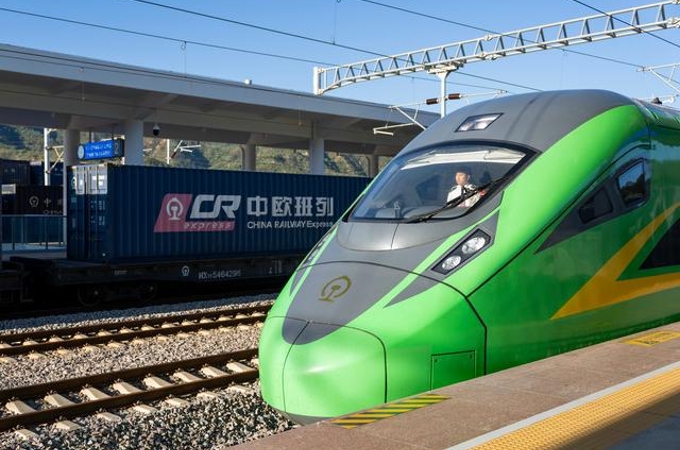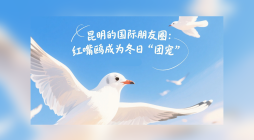Exhibition unveils reunited bronze zodiac animal heads in Yungang Grottoes
Source: China Daily | 2024-04-25 | Editor:Ines
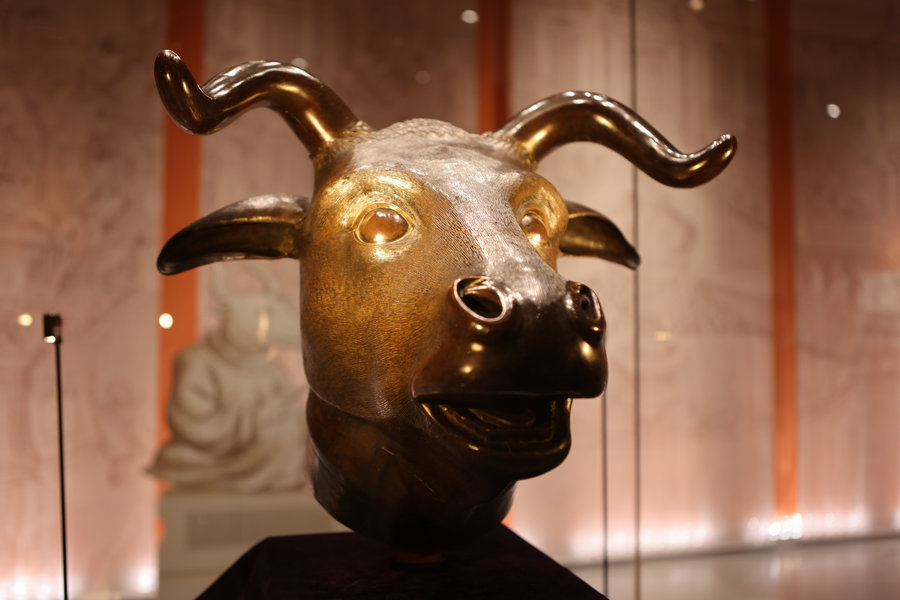
The bronze Chinese zodiac animal heads, including the ox, tiger, horse, monkey, and pig, originally from the Old Summer Palace, are on display at the Yungang Grottoes museum in Datong city, Shanxi province. [Photo provided to China Daily]
Adorned by luxurious dark violet fabric, the bronze Chinese zodiac animal heads, including the ox, tiger, horse, monkey, and pig, originally from the Yuanmingyuan Park, now glisten within the Yungang Grottoes museum in Datong city, Shanxi province.
The exhibition, The Immortality of Gold and Stone: the Seeking and Protecting Record of the Old Summer Palace and Yungang Cultural Relics, offers visitors a unique opportunity to marvel at these historic artifacts alongside the breathtaking grottoes and Buddha statues, running from April 15 to May 26.
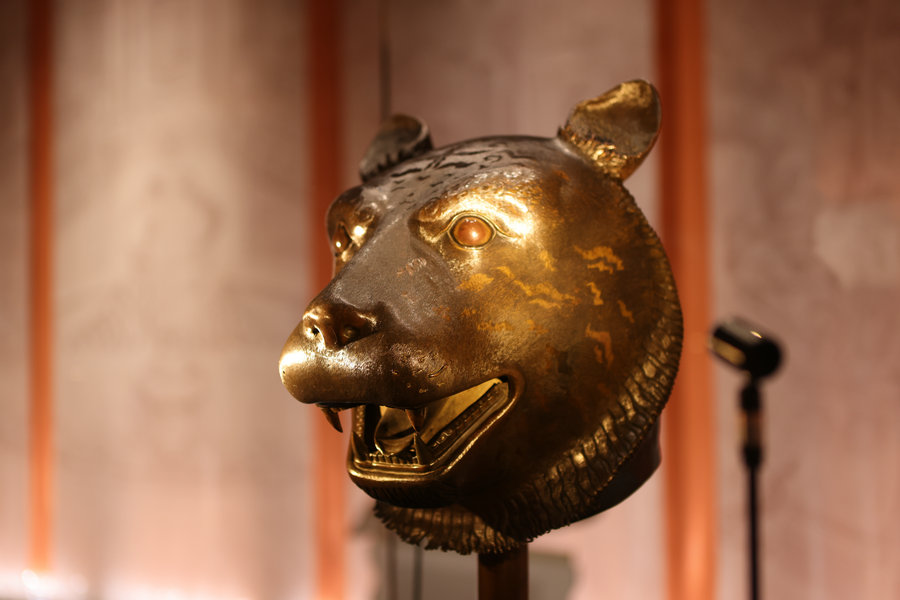
The bronze Chinese zodiac animal heads, including the ox, tiger, horse, monkey, and pig, originally from the Old Summer Palace, are on display at the Yungang Grottoes museum in Datong city, Shanxi province. [Photo provided to China Daily]
Once part of the water clock fountain in Yuanmingyuan, or the Old Summer Palace, these bronze animal heads were looted from stone statues during the Second Opium War in 1860, and subsequently dispersed across the globe, only to be reunited through the relentless efforts of patriotic philanthropists. While the ox, tiger, monkey, and pig heads now reside in the collection of the Poly Art Museum in Beijing, the horse head is under the care of the National Cultural Heritage Administration, and the rat and rabbit heads are housed in the National Museum of China.
Regrettably, the dragon, snake, sheep, rooster, and dog heads remain missing. In the museum of Yungang Grottoes, the names of the absent bronze animal heads are displayed alongside their companions as pale, flat projections on the floor, accompanied by standing boards featuring line drawings of their complete forms, serving as a poignant reminder of their absence.
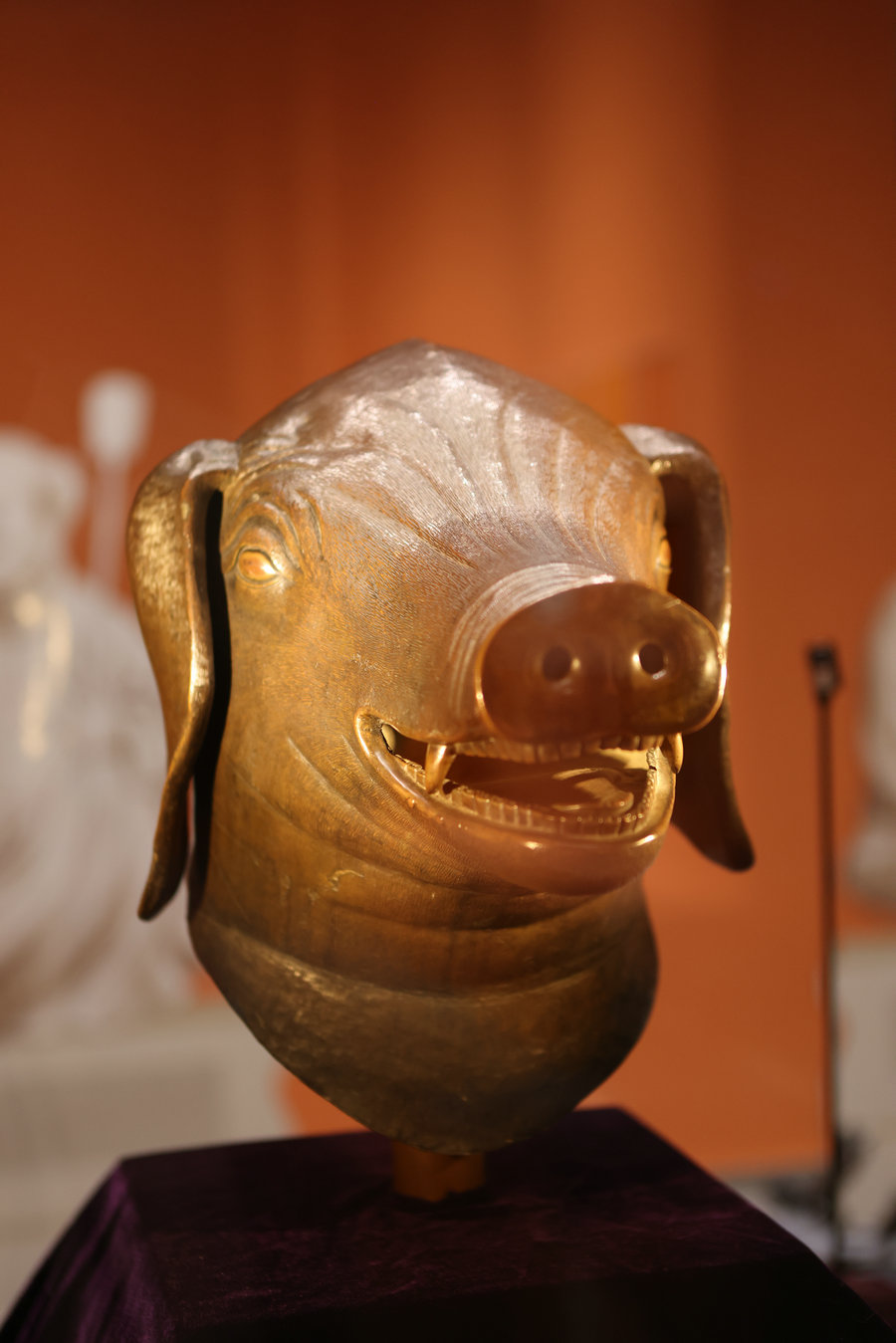
The bronze Chinese zodiac animal heads, including the ox, tiger, horse, monkey, and pig, originally from the Old Summer Palace, are on display at the Yungang Grottoes museum in Datong city, Shanxi province. [Photo provided to China Daily]
Wang Chen, deputy director of the research center of cultural heritage and art at Yungang Research Institute, highlighted the exhibition's role in igniting anticipation for the return of the missing bronze animal heads.
The exhibition also sheds light on the tragic fate of stone Buddha statues, many of which were desecrated and sold overseas during the early 20th century, with remnants now on display alongside the bronze animal heads.
Hang Kan, head of the Yungang Research Institute, emphasized the enduring significance of the relics, saying: "The metal animal heads and the stone statues shared a sad and turbulent past, but they will always carry the immortal value of the culture."
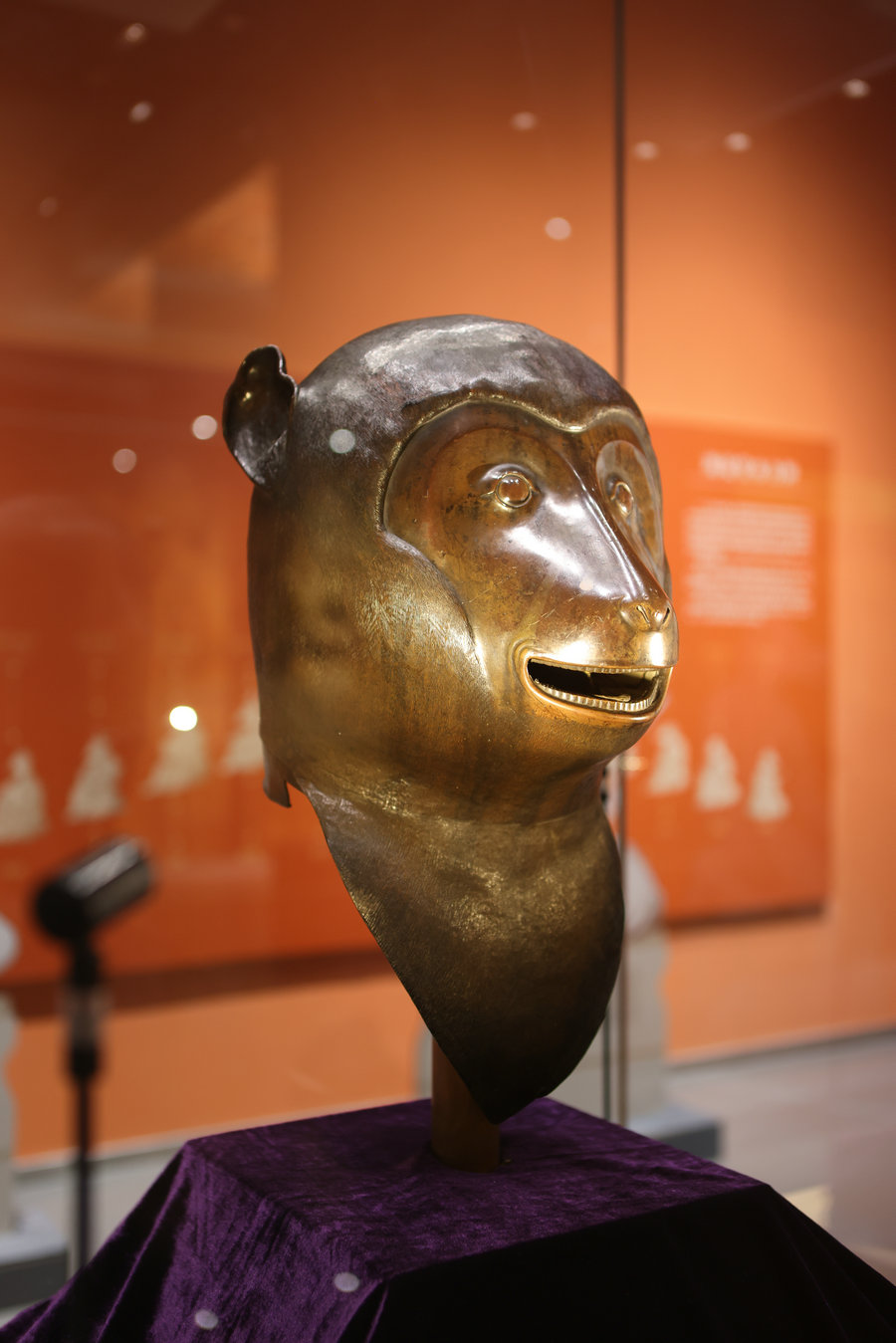
The bronze Chinese zodiac animal heads, including the ox, tiger, horse, monkey, and pig, originally from the Old Summer Palace, are on display at the Yungang Grottoes museum in Datong city, Shanxi province. [Photo provided to China Daily]
Zhao Ruichun, head of the general affairs department of Yungang Research Institute, reported an overwhelming response to the exhibition, with over 11,000 visitors in the first week.
Wan Liqun, deputy curator of Poly Art Museum, noted the exhibition's future plans, stating that after Yungang Grottoes, the bronze animal heads will journey to Guangxi Zhuang autonomous region in South China, following previous showings in Zhuhai city, Guangdong province.
While acknowledging visitor dissatisfaction at Poly Art Museum due to the display of replicas, Wan emphasized the broader goal of increasing public awareness through tour exhibitions, providing more people with the opportunity to appreciate these historic treasures.
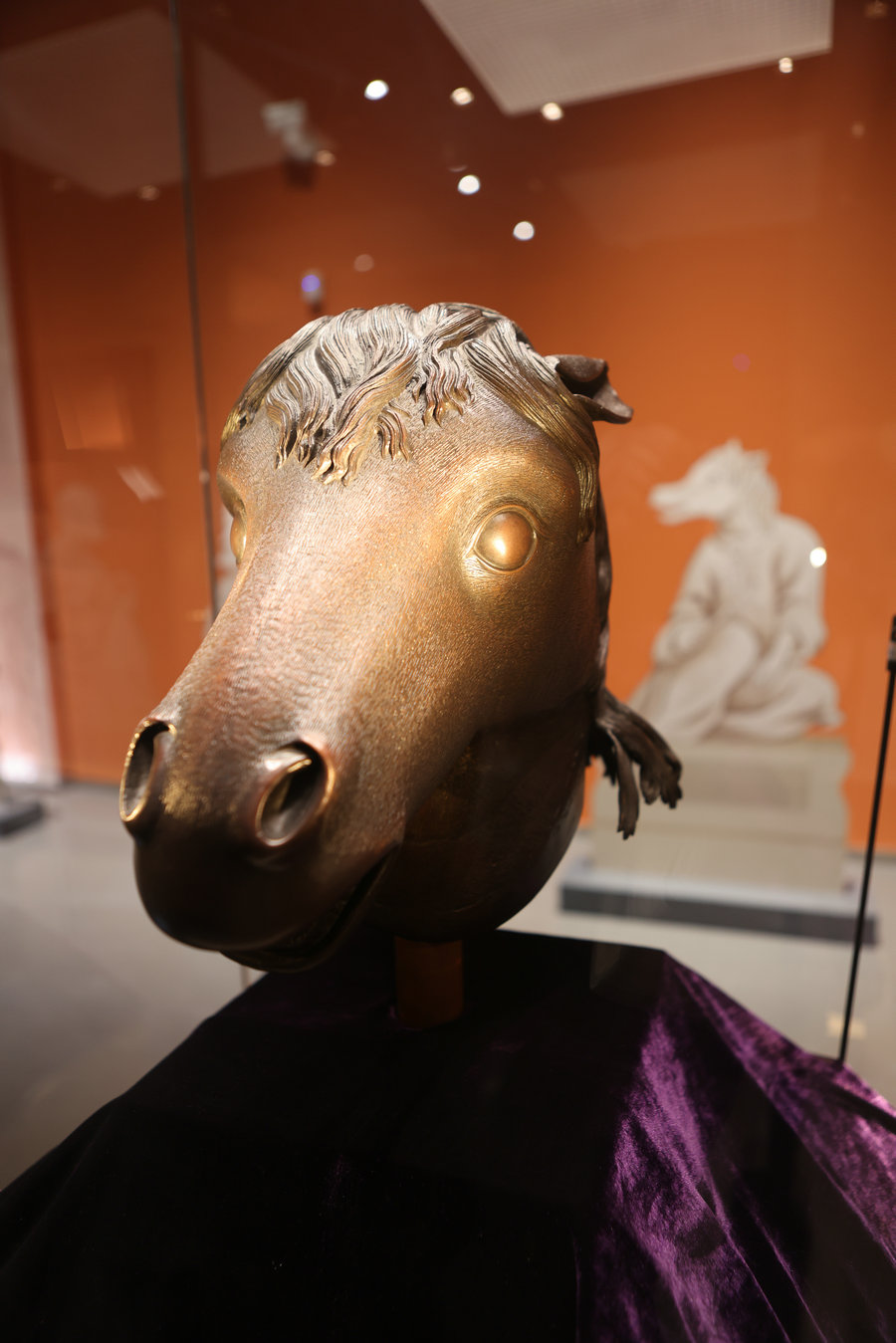
The bronze Chinese zodiac animal heads, including the ox, tiger, horse, monkey, and pig, originally from the Old Summer Palace, are on display at the Yungang Grottoes museum in Datong city, Shanxi province. [Photo provided to China Daily]
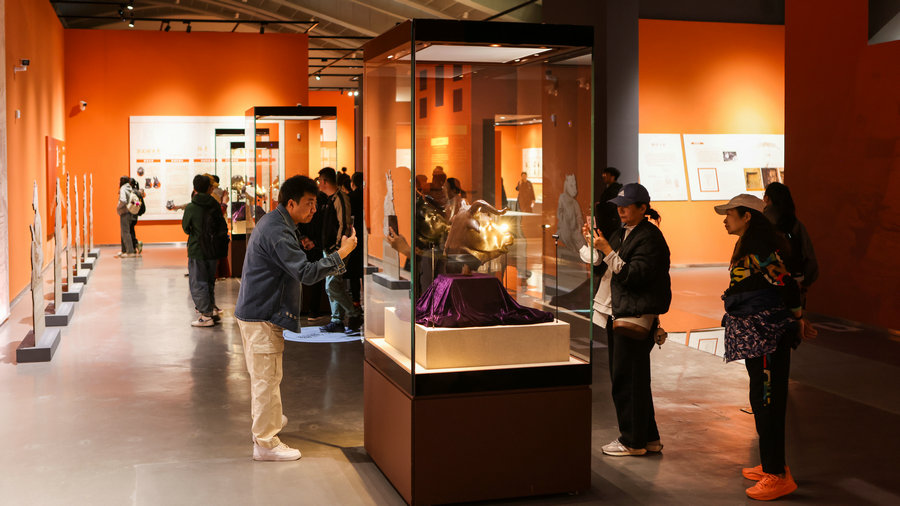
The bronze Chinese zodiac animal heads, including the ox, tiger, horse, monkey, and pig, originally from the Old Summer Palace, are on display at the Yungang Grottoes museum in Datong city, Shanxi province. [Photo provided to China Daily]
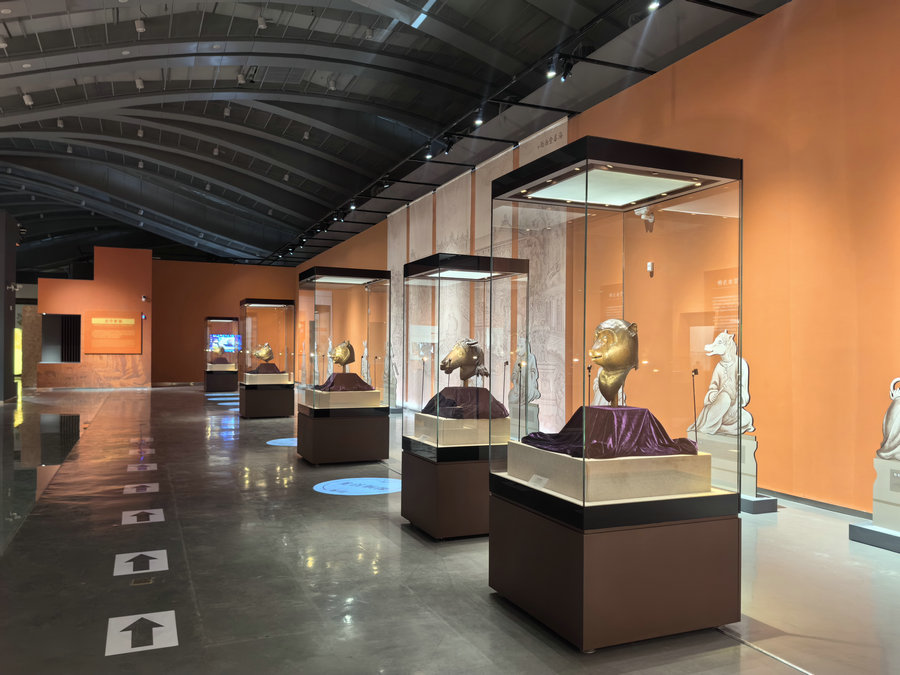
The bronze Chinese zodiac animal heads, including the ox, tiger, horse, monkey, and pig, originally from the Old Summer Palace, are on display at the Yungang Grottoes museum in Datong city, Shanxi province. [Photo provided to China Daily]
You May Like
-
Poetry in motion from the silver screen to the museum
An immersive exhibition at the Powerlong Museum in Shanghai is bringing to life the most glorious chapter in Chinese poetry.
InKunming 2024-02-22 -
Chinese museums receive 66 mln visits during eight-day holid...
Museums across China received approximately 66 million visits during the Mid-Autumn Festival and National Day holiday, which ended on Friday, according to data ...
InKunming 2023-10-09 -
Qinqiang opera art museum in Xi'an attracts many tourists du...
The Qinqiang opera art museum, which presents the development history and the unique artistic charm of the Qinqiang Opera through abundant historical relics and...
InKunming 2023-08-10 -
Chongqing's museum displays history of Palace Museum antique...
A tourist visits a museum displaying the history of Palace Museum antiques moved there during World War II in southwest China's Chongqing, June 10, 2023. The mu...
InKunming 2023-06-14 -
Chinese aviation history museum takes off in Beijing
The History Museum of China Aviation Industry was inaugurated in Beijing on Sunday, becoming the only venue to provide a comprehensive display of China's 110-ye...
InKunming 2023-04-17 -
China sees growth in number of popular-science museums
The latest data showed that there were 1,525 science and technology museums in China in 2020, up more than 50 percent from 2012, according to a press conferen...
InKunming 2022-09-06 -
Various events introduced for students at museums in Xi'an
Museums and cultural venues in Xi'an have introduced various events for students during the summer holiday.
InKunming 2022-08-12 -
Chinese museum solicits cultural relics exhibits worldwide
The Capital Museum in Beijing has started soliciting cultural relics exhibits worldwide to promote traditional Chinese culture.
InKunming 2022-08-01 -
Archaeology museum opens in Shaanxi
China's first comprehensive museum focusing on archaeology opened to the public on Thursday in Xi'an, the capital of Shaanxi province.
InKunming 2022-06-07 -
China Focus: Virtual museum tours enrich lives in epidemic
Virtual museum tours are steadily becoming more and more common across the globe. Powered by virtual reality, augmented reality and other cutting-edge technolog...
InKunming 2022-05-19
